How to prune fruit trees – both freestanding and trained trees
Once you know how to prune fruit trees, you’ll be able to look forward to an abundant harvest of fruit through the year


Whatever the variety you have, knowing how to prune fruit trees will ensure they stay healthy, give you an abundant harvest year after year, and keep looking beautiful and under control.
Be it apple, pear or plum, cherry or peach, there is a fruit tree to fit any sized garden and suit any climate. Fruit trees can be grown free-standing or trained to grow in a certain shape – such as espaliers, cordons, pyramids and fans.
Just as the timing is important for how to plant fruit trees, so, too, the timing and method for how to prune fruit trees will differ depending on which of these tree growing styles you have chosen. All fruit trees need to be pruned regularly, especially fast growing fruit trees.
Once you know how to prune fruit trees you will find them great, easy to care for additions to your vegetable garden ideas, providing you with fresh fruit for years to come.
How to prune fruit trees – and why
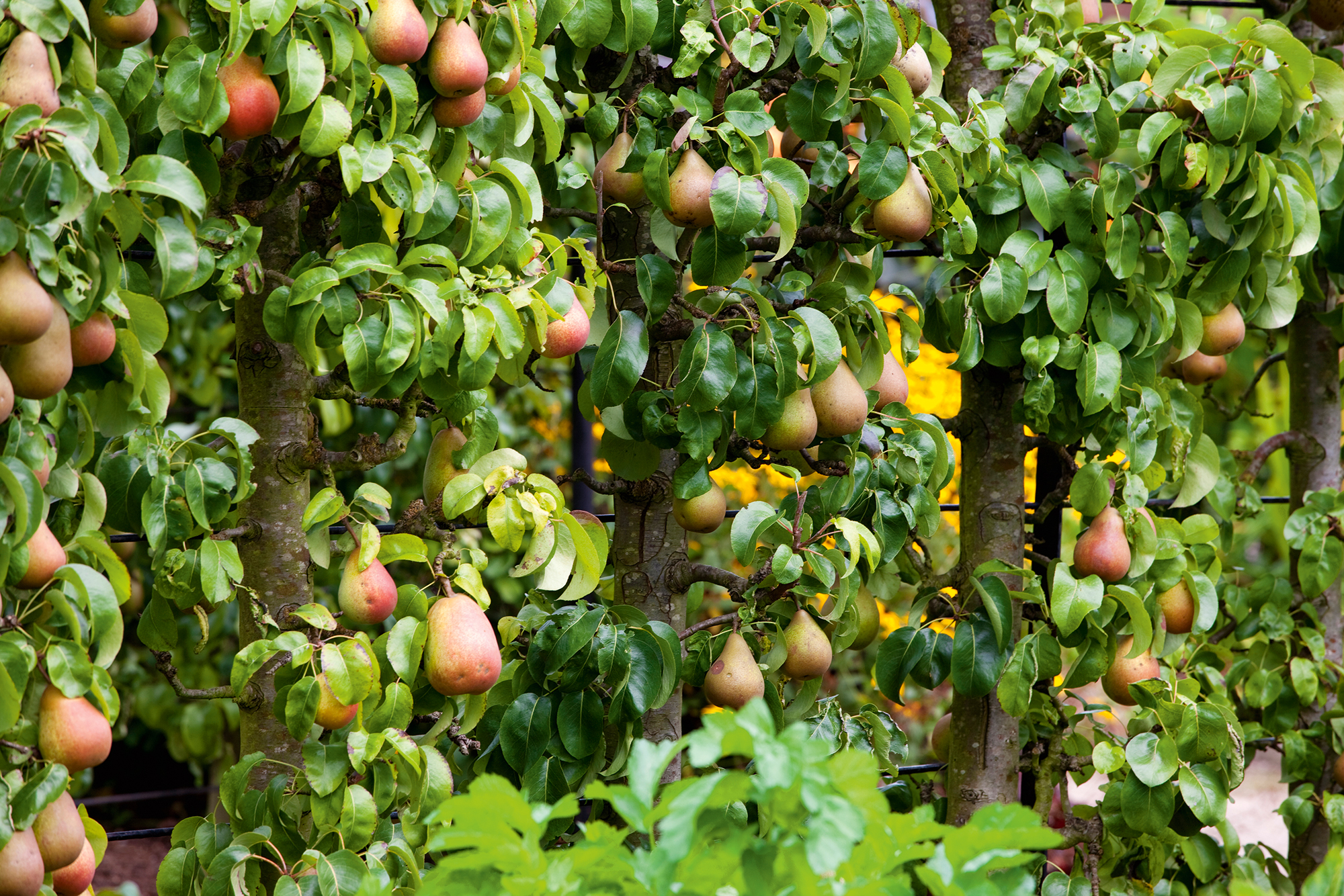
Pruning is simply the method of cutting back a fruit tree or bush in order to maintain good health and enable the best crop to form.
'Our pruning efforts can enhance beauty, fruit production, strengthen structure, and prevent wounds and disease, ultimately extending the fruit tree's vitality and lifespan,' explains Neil Collins from heirloom fruit tree supplier, Trees of Antiquity. Therefore, knowing how to prune fruit trees is an important skill to master.
The timing for pruning fruit trees may differ depending on the variety of tree. For instance, if want to prune cherry trees, this may be at a different to when you would prune an apple tree or a plum tree.
Design expertise in your inbox – from inspiring decorating ideas and beautiful celebrity homes to practical gardening advice and shopping round-ups.
Step-by-step guide to pruning fruit trees
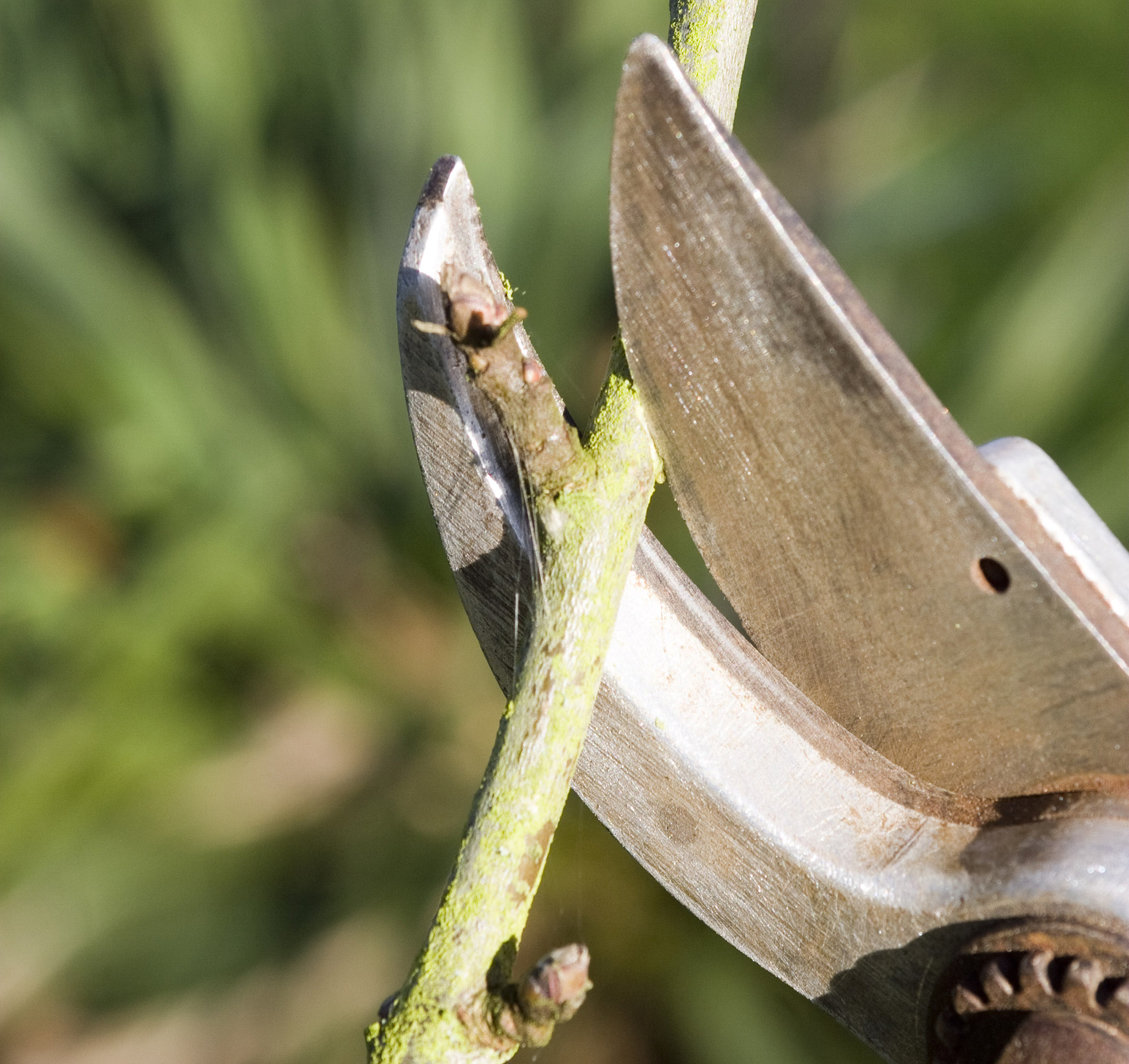
Laura Neville from the Belkin Family Lookout Farm suggests you should use 'hand pruners for pruning fruit trees, and a hand saw to remove dead tree arms.'
There are certain steps to follow in how to prune fruit trees:
1. Clean up
'Start by pruning away any wood that is dead, damaged or diseased – otherwise known as the three D’s,' says Brian Barth from the Modern Farmer.
Any branches growing from the root of the tree should also be removed. These are ‘suckers’ and 'originate from the rootstock rather than the fruiting variety grafted on top,' explains Brian.
When you prune tree branches, it’s really important to cut all the way back to the larger limb and not to leave little stumps, as this can cause disease.
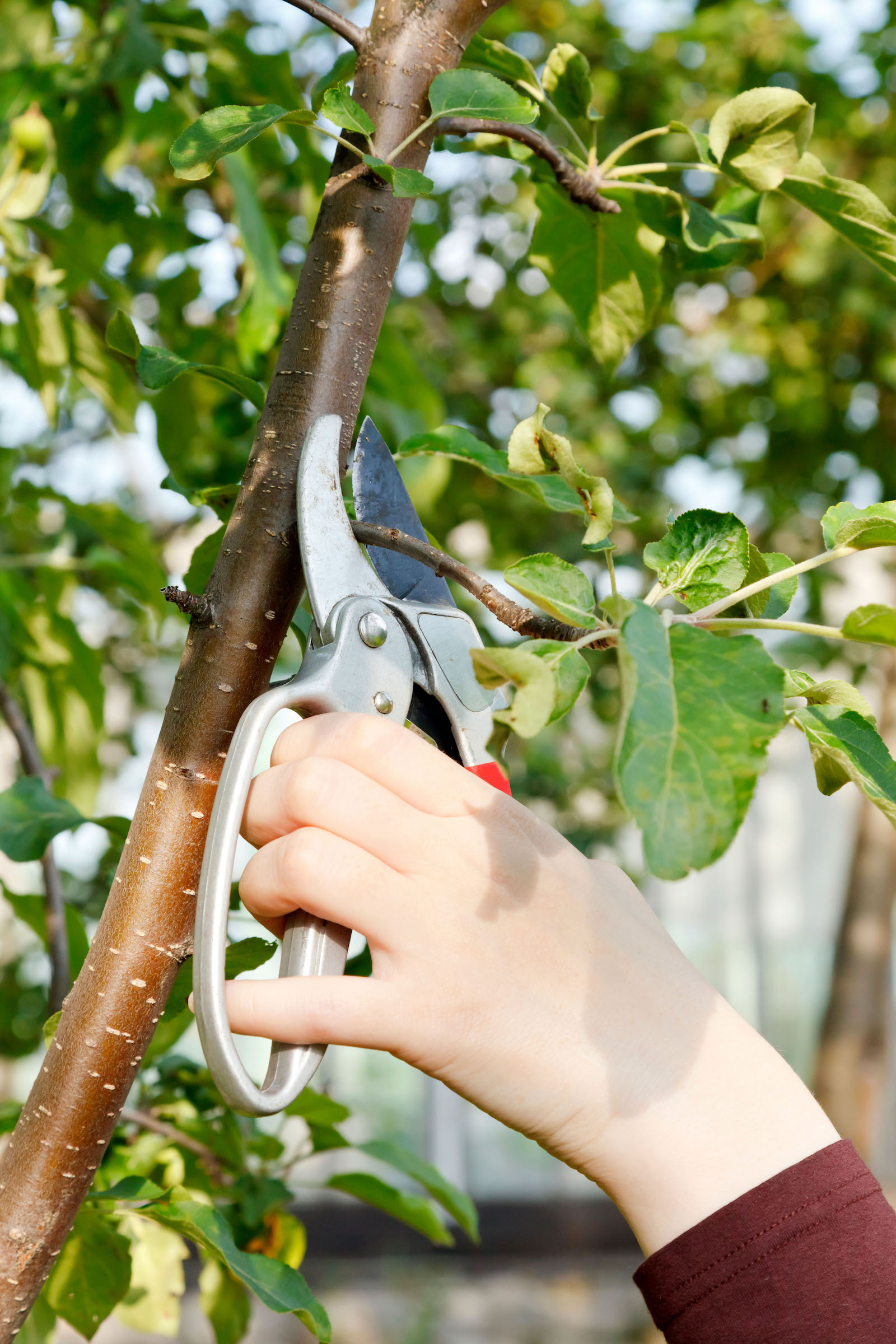
2. Thin out
'The goal of thinning is to allow light and air into the canopy, which boosts fruit production and reduces problems with pests and disease,' explains Brian.
Remove any branches that are crossing paths, growing downwards or growing too close together. 'There should be about 6-12 inches of air space between each branch.'
3. Head back
This step is simple, just like giving your tree a haircut. 'Heading back the tree means cutting off 20 to 30 percent of last year’s growth,' says Brian.
Unlike the previous steps, these cuts will only be made part way into each branch. Just be sure to prune back to a bud.
How far back can I prune fruit trees?
How far back you can prune a fruit tree will differ depending on the age of the tree and also the variety of fruit tree you are growing.
'There is no set amount; it really depends on the individual trees arm's growth and health and also the variety of tree,' advises Laura Neville from Belkin.
The amount you might prune a fig tree, will be different to how to prune a lemon tree.
When you first plant your fruit tree, you should prune the new stem down to about 24-30 inches and remove any side shoots.
Once your tree is mature, you can cut back about 20 per cent of the length of each stem, to a new bud. This will keep your fruit tree healthy and provide an abundant of fruit year after year.
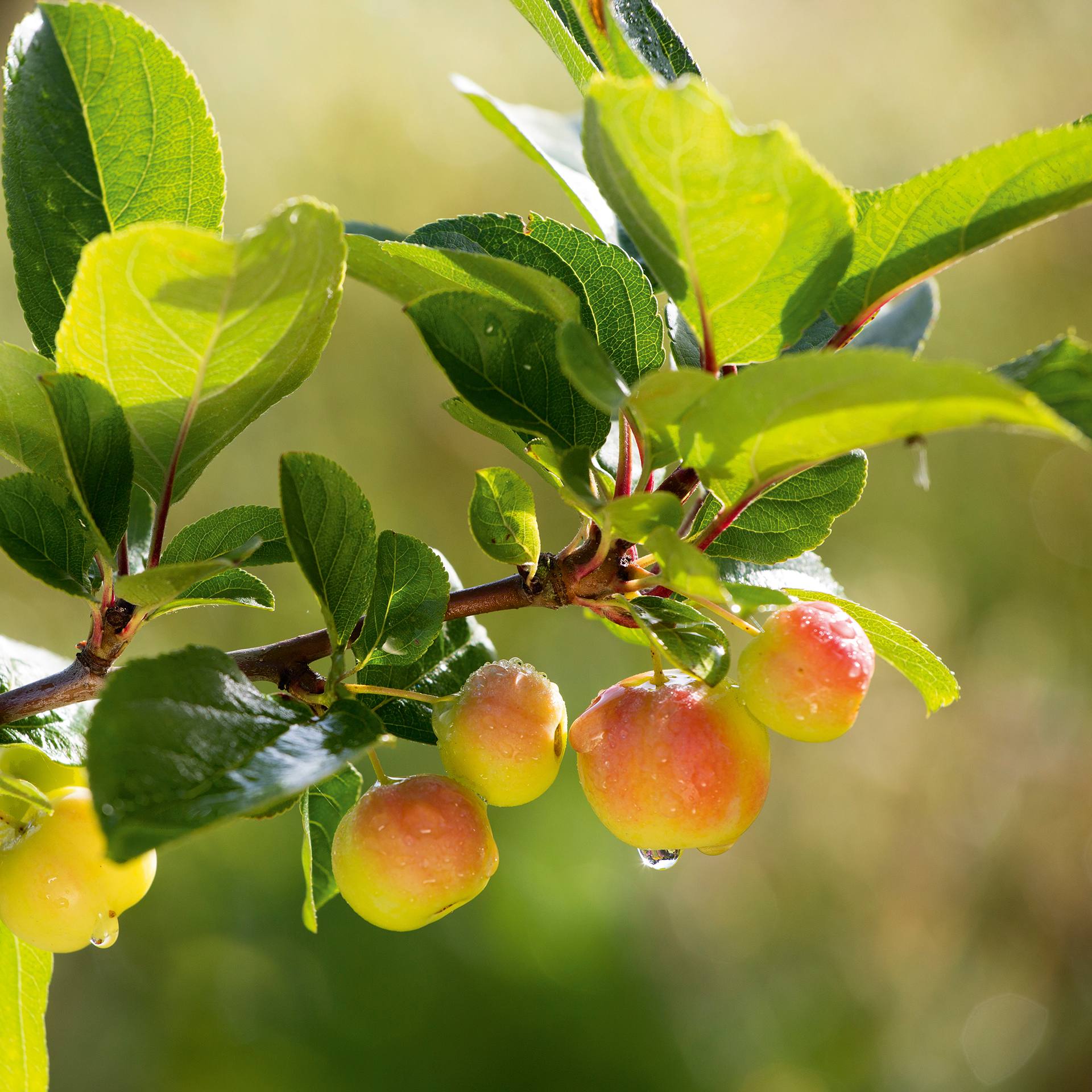
What month is best to prune fruit trees?
The best month to prune fruit trees will again depend on the variety of tree, but also where you live and the local climate.
'Generally, the best time to prune a fruit tree is in winter, spring and early summer. For size and height control, the best time would be spring and early summer. For disease and broken limbs, winter pruning is best,' advises Neil Collins from Trees of Antiquity.
However, this advice does depend on whether you are growing a free-standing tree or training your tree into a shape as part of your vegetable garden trellis ideas.
'Free-standing trees should be pruned when they are dormant, so any time from early winter to early spring when there are no new buds forming,' advises Brian Barth.
Trees that are being trained into a shape should be pruned in the spring or summer, which will restrict the growth of tree further and enable you to keep the desired shape.
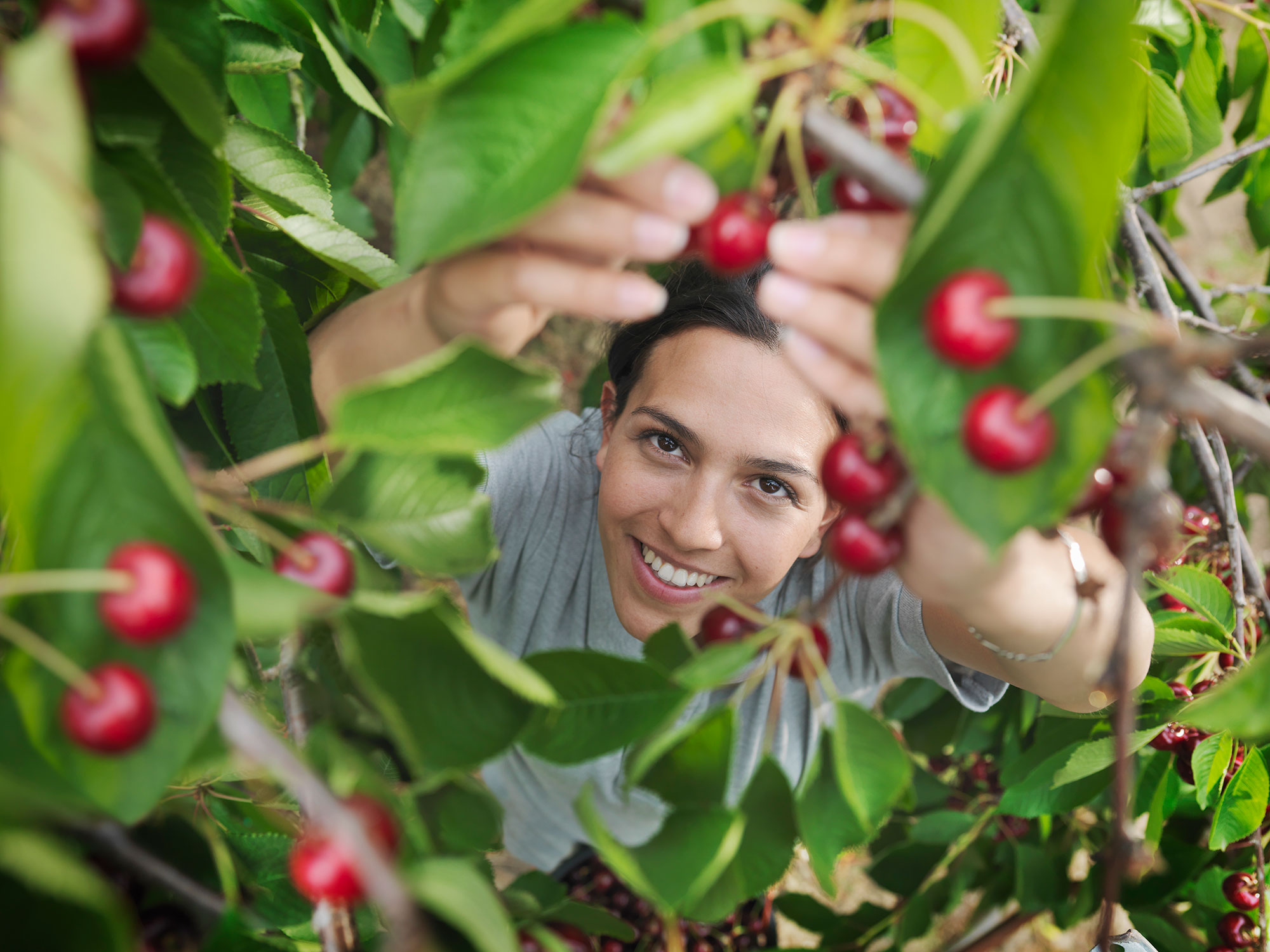
Is it ok to trim trees in summer?
You can trim trees in early summer to control the growth. 'If you prune in early summer, you can remove the actively-growing wood on that year's branch ends,' explains Clare Sweany, a horticulturist from Raintree Nursery. In that way, you can stop the branches from getting any longer so that the tree keeps a better shape.
There may seem to be a lot to learn on how to prune fruit trees, but once you have mastered the method, you will reap the rewards in the form of bountiful fruit harvests.

Emma received the keys to her first allotment plot in 2019 and has been documenting her progress on Youtube and Instagram ever since. As the allotment grew, so did her love of gardening and her follower count. Emma has a passion for writing and has contributed articles to Kitchen Garden magazine and Life lovers magazine, as well as starting her own blog – the pink shed.
Growing food has become one of her biggest passions and she enjoys sharing her trials and errors with her audience in a funny, honest and informative way.